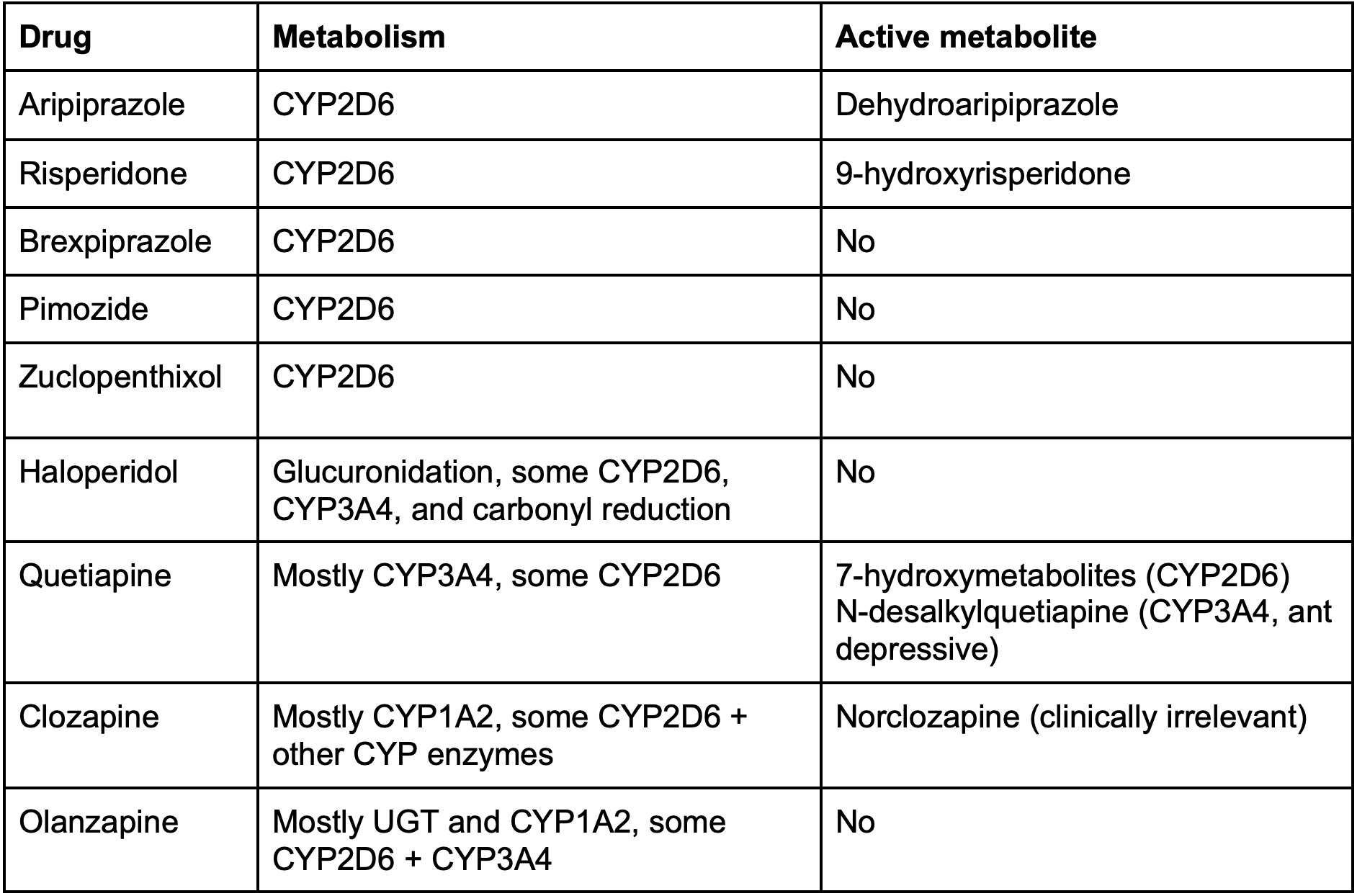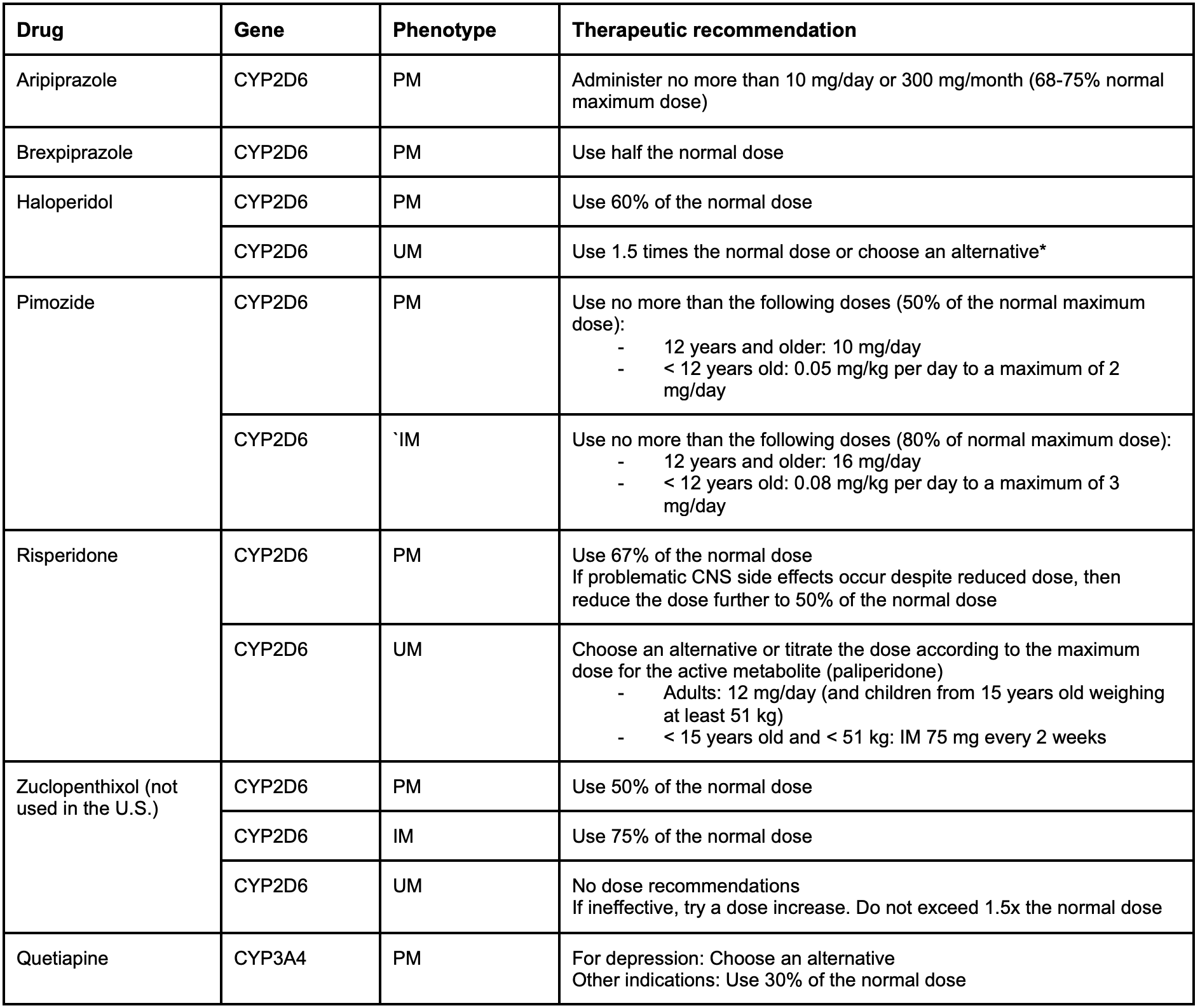Article
Pharmacogenomics Update: Working Group Guideline for Gene-Drug Interactions Between CYP2D6, CYP3A4, and CYP1A2 With Antipsychotics
Author(s):
Major pharmacogenomics organizations continue to recognize the potential relevance of pharmacogenomics for psychiatric medication management, mainly due to its effects on pharmacokinetics.
Background
Within the field of pharmacogenomics (PGx), there has been significant interest in its application to psychotropic medications, which include various antidepressants and antipsychotics. Particularly, CYP2D6 and CYP2C19 are implicated to some degree in the metabolism of 80% of psychiatric labels.1
Image credit: tadamichi - stock.adobe.com

Despite this, research has struggled to show replicated pharmacogenomic associations with these genes, and large clinical trials to date (GUIDED) show little to modest benefit on symptomatic improvement and response/remission outcomes.2 Nonetheless, major pharmacogenomics organizations, such as the Clinical Pharmacogenetics Implementation Consortium (CPIC), FDA, and Dutch Pharmacogenetics Working Group (DPWG), continue to recognize the potential relevance of pharmacogenomics for psychiatric medication management, mainly due to its effects on pharmacokinetics.3
Of these organizations, clinical guidelines for the management of psychiatric medications lag behind the emerging research behind pharmacogenomic associations of these medications. Particularly, CPIC published clinical guidelines for the management of selective serotonin reuptake inhibitors [SSRIs] (2015) and tricyclic antidepressants [TCAs] (2016) that only include actionable recommendations for a handful of medications, with no published guidelines to date for serotonin-norepinephrine reuptake inhibitors (SNRIs) or antipsychotic medications.
In comparison, the DPWG has released guidelines for nearly all antidepressants and antipsychotics with frequent clinical recommendation updates (November 2018, February 2022).
Table 1. Antipsychotic metabolism

Clinical evidence
CYP2D6
Multiple studies found correlation of CYP2D6 phenotypes and plasma concentration of aripiprazole plus active metabolite dehydroaripiprazole, which was most profound in poor metabolizers with indicators of a higher risk of adverse effects (AEs). A single study found a non-significant increase of dose-corrected AUC of brexpiprazole without development of AEs in intermediate metabolizers, but drug labels recommend a dose decrease in poor metabolizers due to increased plasma concentrations.
Multiple pharmacokinetic studies found increased plasma concentrations of haloperidol with intermediate and poor metabolizers. Another haloperidol study found high scores of extrapyramidal symptoms and 1 case of serious AEs with poor metabolizers.
Additionally, a study of 5 ultrarapid metabolizers found lower rates of improvement with haloperidol compared to other phenotypes. Few studies show reduced clearance and increased exposure of pimozide; however, this may be clinically relevant as pimozide may cause serious but rare exposure-dependent adverse QTc prolongation.
Various kinetic studies support the effect of CYP2D6 phenotype on exposure of risperidone and its active metabolite. A single, large study found an increase in therapy failure with poor and ultrarapid metabolizers, but multiple smaller studies had conflicting results with therapeutic response and incidence of AEs across all phenotypes.
Lastly, despite some metabolism by CYP2D6, multiple studies failed to show significant pharmacokinetic differences or clinical effects of olanzapine, clozapine, and quetiapine.
CYP3A4
A single, large study evaluating quetiapine and CYP3A4 found highly increased serum concentrations in poor metabolizers, noting that this difference (3.2 factors higher dose-corrected serum concentrations) was impactful enough to suggest likely clinical consequences such as increases in AEs. Additionally, concentrations of N-desalkylquetiapine are likely reduced, possibly resulting in diminished antidepressant effects for poor metabolizers.
CYP1A2
Multiple studies failed to demonstrate significant differences in pharmacokinetics, AEs, or response rates based on CYP1A2 phenotype or genotype groups for clozapine or olanzapine.
Clinical recommendations
Table 2. Summary of the therapeutic recommendations based on CYP2D6 and CYP3A4 phenotype for antipsychotics. *Antipsychotics not metabolized by CYP2D6 or to a much lesser extent include flupentixol, penfluridol, quetiapine, olanzapine, or clozapine. PM = poor metabolizer; IM = intermediate metabolizer; UM = ultrarapid metabolizer.

Testing guidance
Based on the above recommendations, the DPWG has developed a Clinical Implication Score to direct clinicians on whether preemptive pharmacogenomic testing should be completed prior to initiating antipsychotic therapy. In summary, these criteria are based on (1) the clinical effect associated with the gene-drug interaction, (2) the level of evidence supporting the associated clinical effect, (3) the number needed to genotype (NNG) in the Dutch population, and (4) the availability of and type of PGx information in the drug label.
Based on this, gene-drug pairs are given one of the following Clinical Implication Scores: essential, beneficial, or potentially beneficial. The DPWG concluded that preemptive genotyping may be potentially beneficial for aripiprazole, brexpiprazole, haloperidol, pimozide, and risperidone for CYP2D6, and for quetiapine-CYP3A4 due to the lack of evidence showing severe clinical effects.
They further go on to state that they do not currently recommend preemptive pharmacogenomics testing for patients treated with the aforementioned antipsychotics, but that preemptive testing could be considered on an individual patient basis. Prior to this, the DPWG has not provided explicit pharmacogenomics testing recommendations for specific gene-drug pairs. CPIC quotes that their guidelines, “are designed to help clinicians understand HOW available genetic test results should be used to optimize drug therapy, rather than WHETHER tests should be ordered.”
Future implications
The following recommendations are a useful tool for clinicians to apply pharmacogenomics to patients taking the above antipsychotic medications. Implementation of these recommendations may be beneficial for patients to help guide dosing in the case of increased risks of serious AEs associated with antipsychotic medications, such as extrapyramidal symptoms (typical antipsychotics) and metabolic syndrome (atypical antipsychotics), which commonly leads to further health complications, such as diabetes, obesity, and cardiovascular events.
Although the DPWG does not currently recommend preemptive testing for the aforementioned antipsychotics, it is important to consider that these guidelines are developed for use solely within the Dutch population (as evidenced by the criteria of NNG in the Dutch population as described in their Clinical Implication Score criteria). Further, the decision to utilize pharmacogenomics prior to antipsychotic therapy should be based upon patient-specific criteria, such as a history of issues with multiple antipsychotics, CYP2D6/CYP3A4 metabolized drugs, decreased renal function, and other relevant comedications.
Lastly, although the DPWG is the only published antipsychotic pharmacogenomic guideline to date, CPIC currently ranks known gene-drug interactions with CYP2D6 and antipsychotics as a B, indicating prescribing action is recommended, and it is expected that a published guideline will soon be released given its publicly “in progress” status.
References
- Pardiñas AF, Owen MJ, Walters JTR. Pharmacogenomics: A road ahead for precision medicine in psychiatry. Neuron. 2021;109(24):3914-3929. doi:10.1016/j.neuron.2021.09.011
- Greden JF, Parikh SV, Rothschild AJ, et al. Impact of pharmacogenomics on clinical outcomes in major depressive disorder in the GUIDED trial: A large, patient- and rater-blinded, randomized, controlled study. J Psychiatr Res. 2019;111:59-67. doi:10.1016/j.jpsychires.2019.01.003
- Bousman CA, Bengesser SA, Aitchison KJ, et al. Review and Consensus on Pharmacogenomic Testing in Psychiatry. Pharmacopsychiatry. 2021;54(1):5-17. doi:10.1055/a-1288-1061
- Beunk L, Nijenhuis M, Soree B, et al. Dutch Pharmacogenetics Working Group (DPWG) guideline for the gene-drug interaction between CYP2D6, CYP3A4 and CYP1A2 and antipsychotics [published online ahead of print, 2023 Mar 31]. Eur J Hum Genet. 2023;10.1038/s41431-023-01347-3. doi:10.1038/s41431-023-01347-3






